A Comprehensive Analysis of Inventory Valuation Methods
VerifiedAdded on 2023/03/23
|7
|384
|77
Essay
AI Summary
This essay provides an analysis of different inventory valuation methods, focusing on their importance in organizational inventory management. It discusses three primary methods: First-In, First-Out (FIFO), Weighted Average, and Last-In, First-Out (LIFO). The FIFO method assumes the earliest purchased inventory is sold first, influencing inventory valuation. The weighted average method uses the average cost of all inventory to determine the value of goods sold and remaining stock. While LIFO is less commonly used now, it assumes the latest purchased inventory is sold first. The essay references academic sources to support its explanations of these methods and their implications for inventory management.
1 out of 7
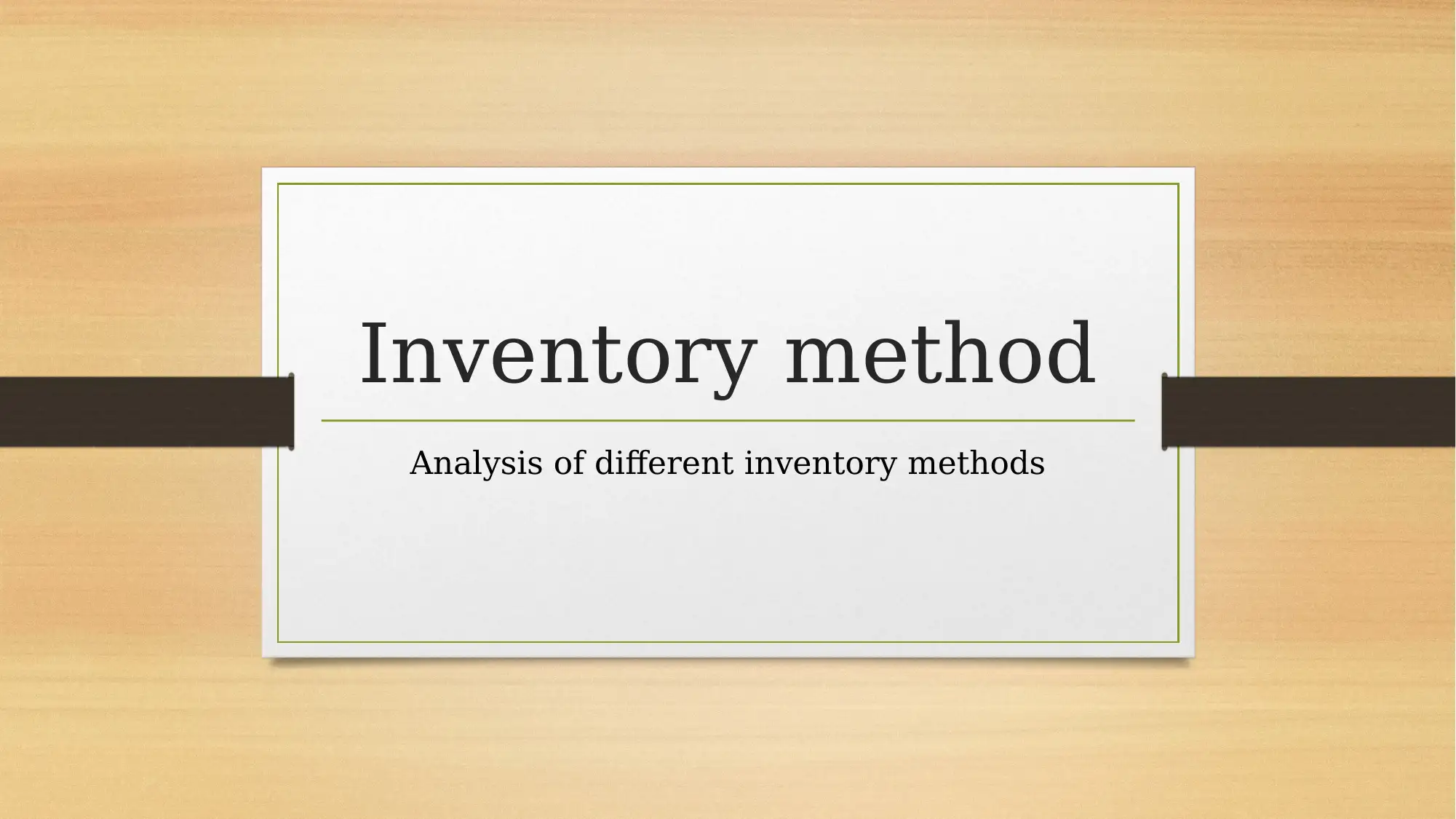
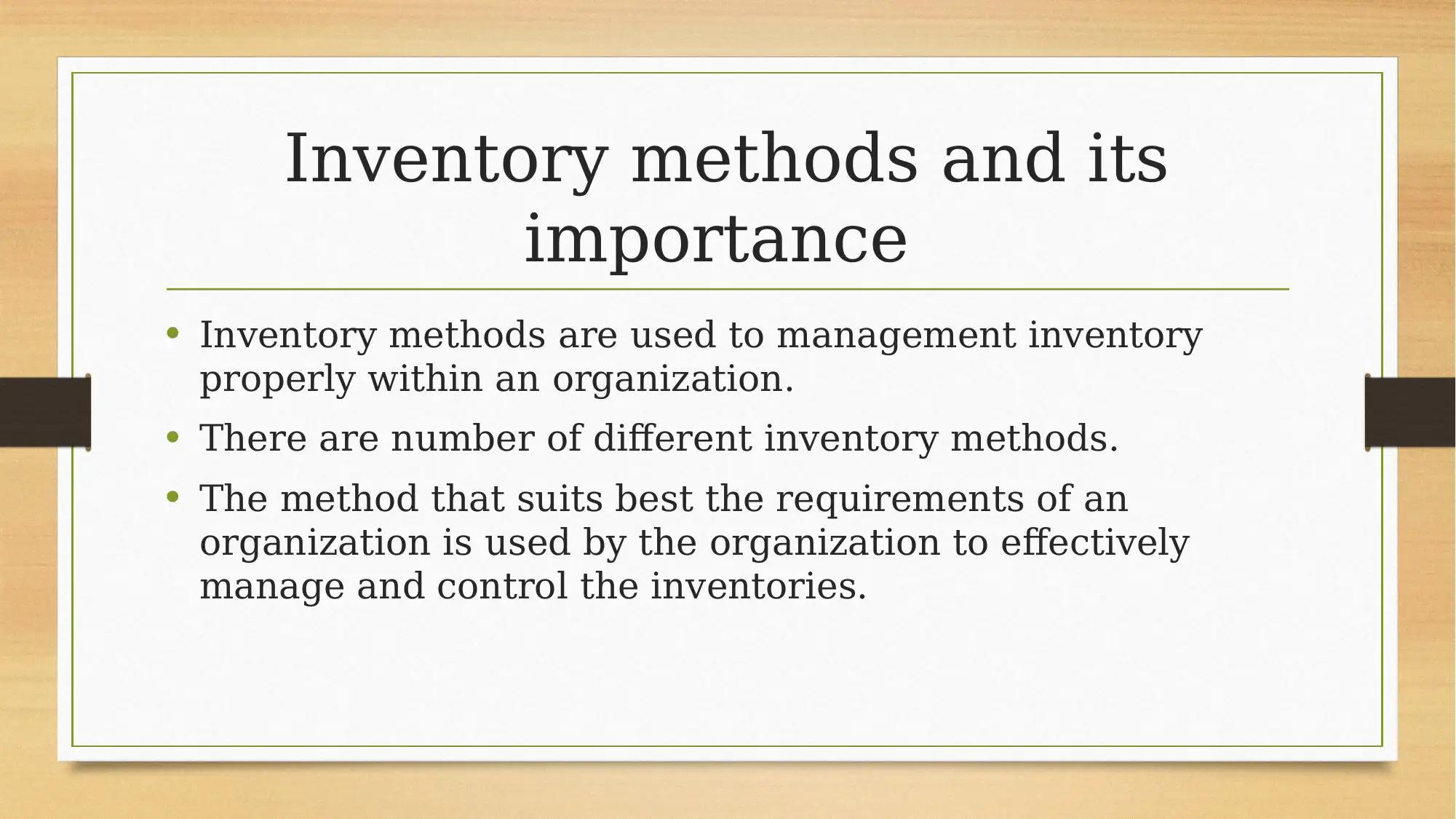
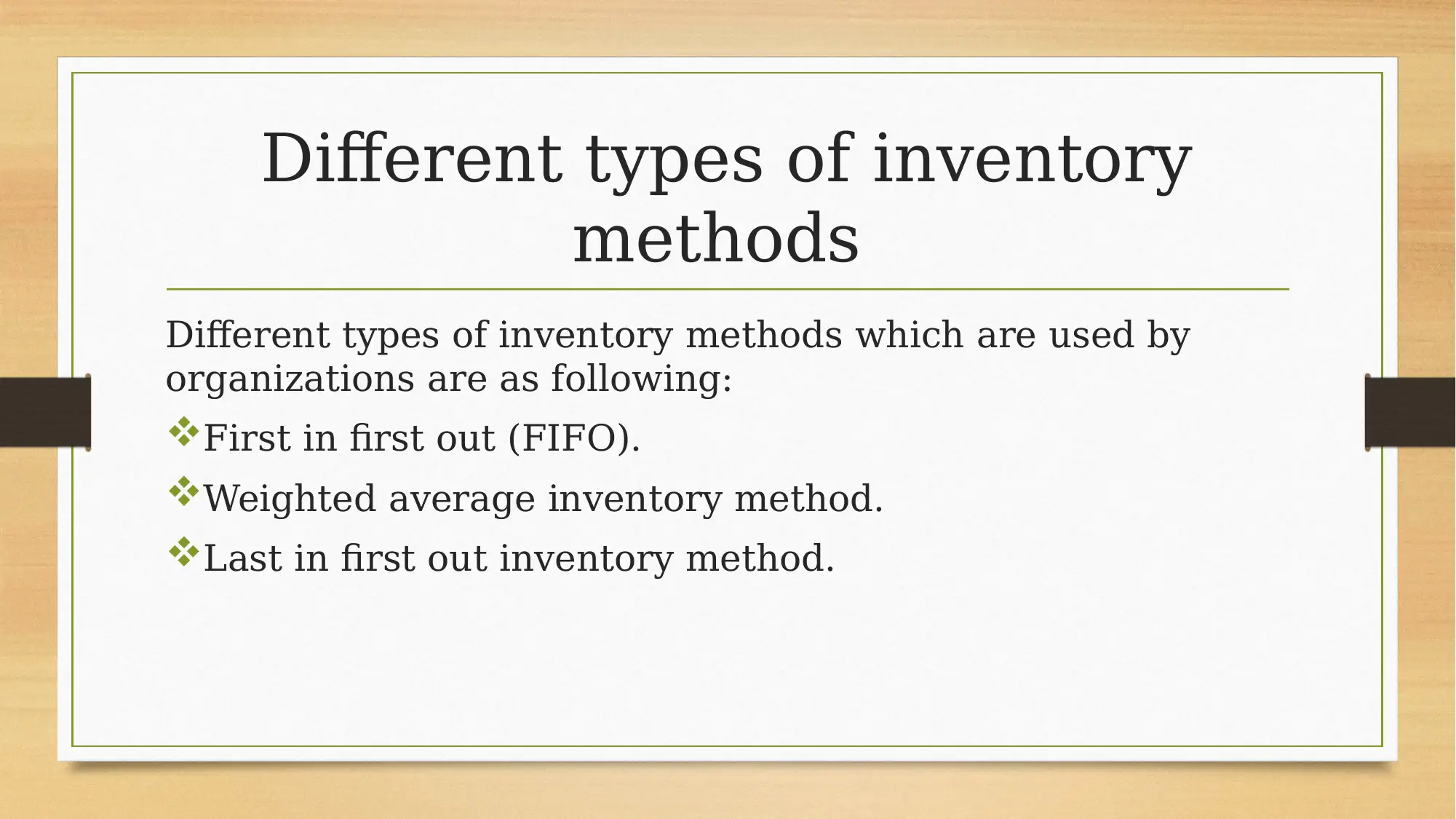

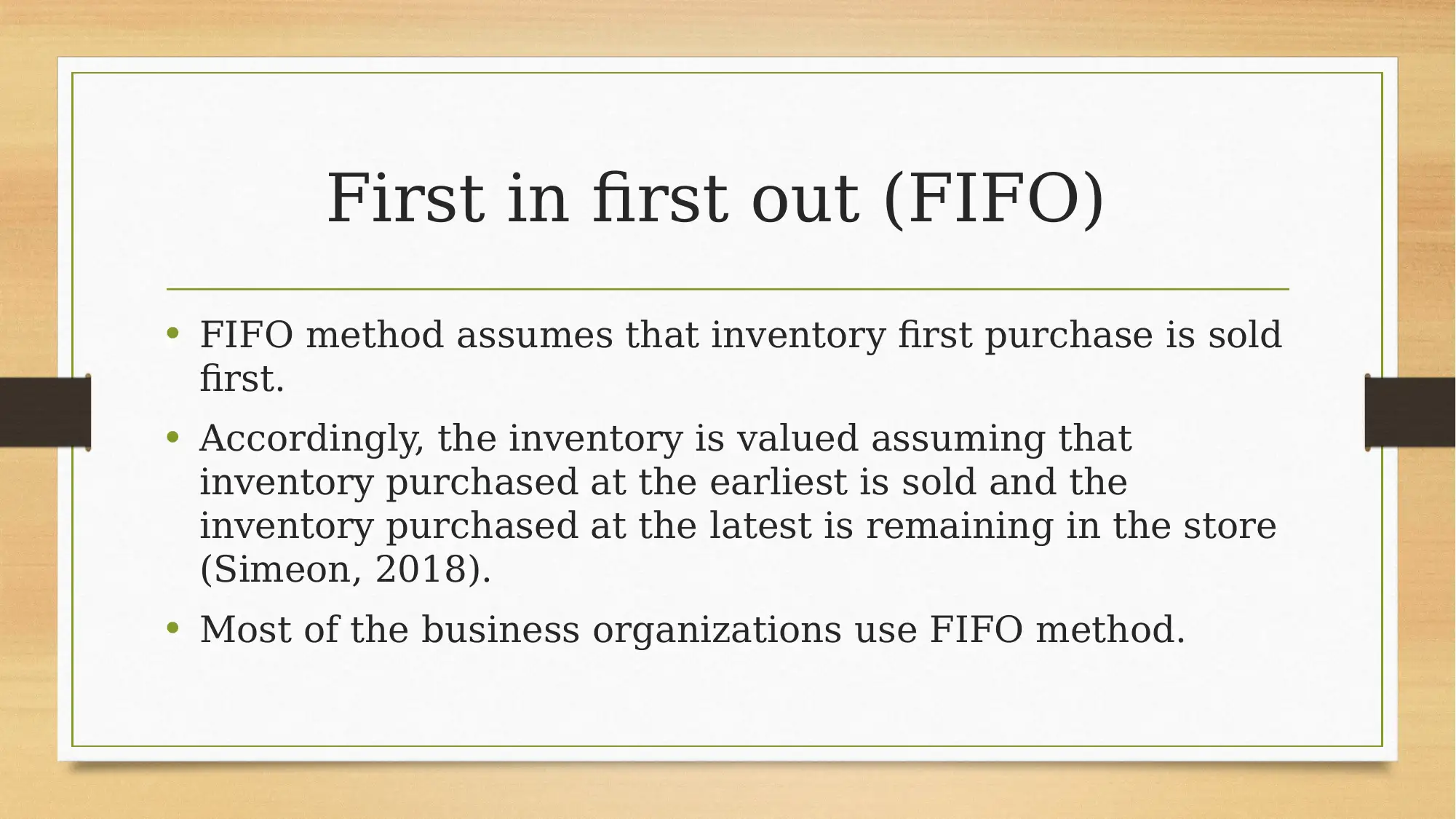
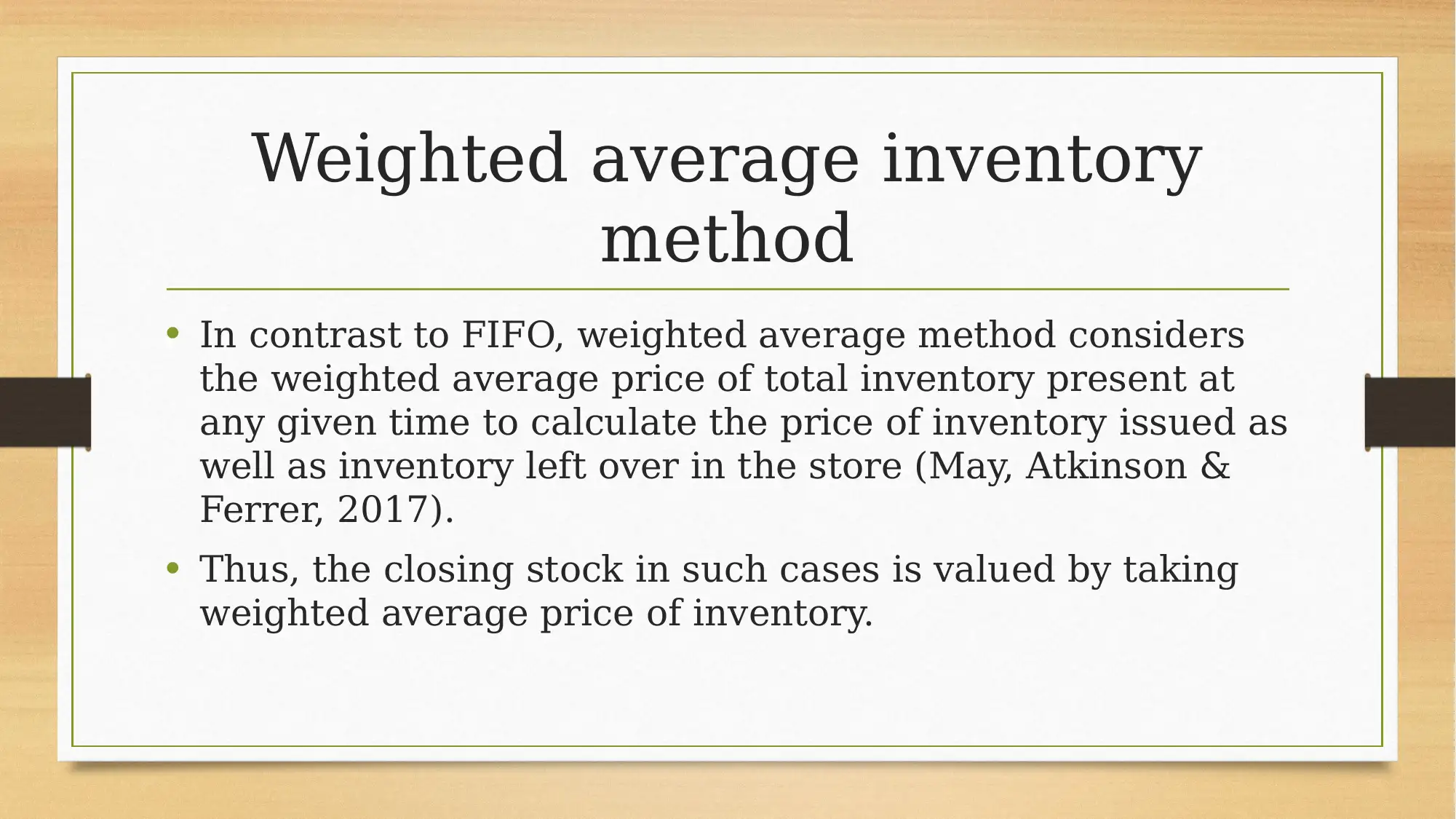
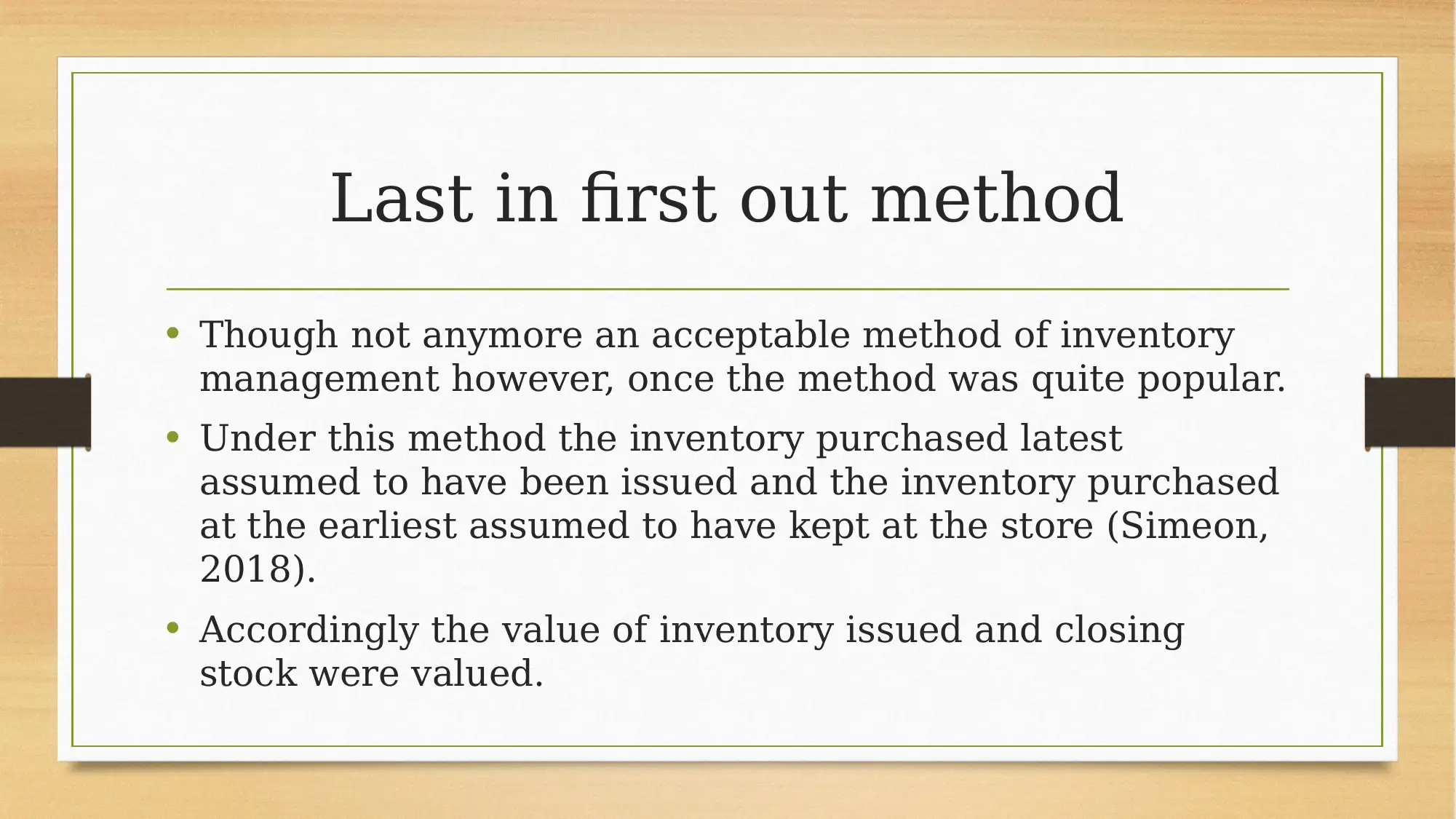
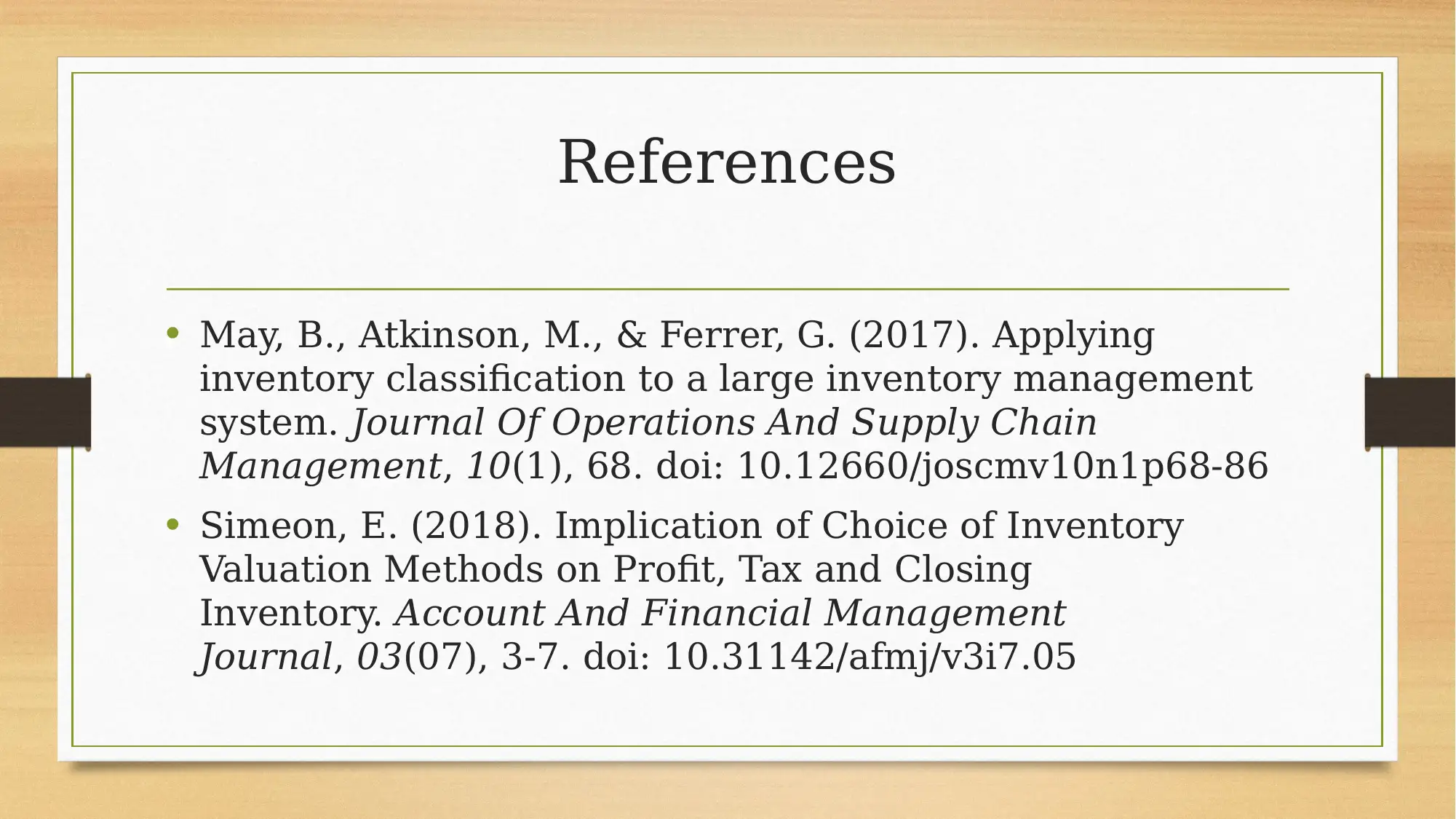




![[object Object]](/_next/static/media/star-bottom.7253800d.svg)